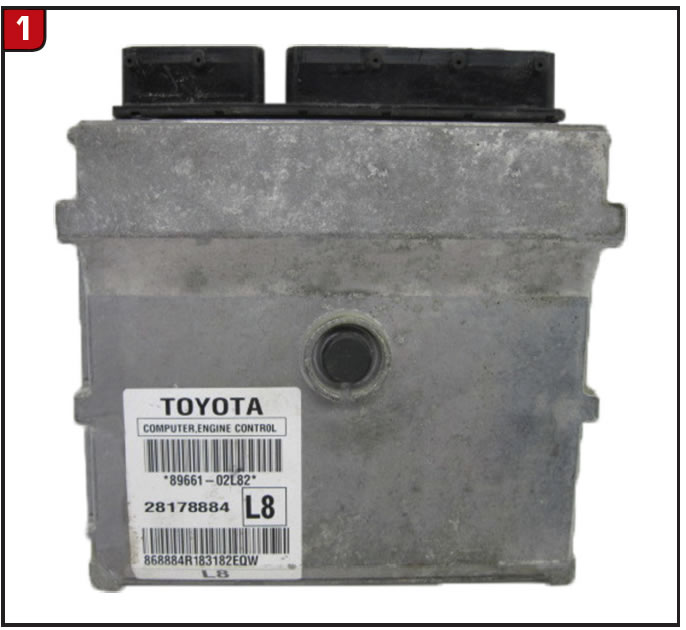
Technically Speaking
- Author: Wayne Colonna, Technical Editor
- Subject matter: 2009 Toyota Corolla LE, U341E
- Issue: Converter Solenoid
Voltage checks show ECU is the problem, not the transmission
A 2009 Toyota Corolla LE with a 1.8L engine and a U341E transmission arrives to a shop with code P2757 Torque Converter Clutch Pressure Control Solenoid Performance (SLU Solenoid) Malfunction stored. The unit was removed and overhauled with a new SLU solenoid and a replacement torque converter. When it was tested, the car seemed to be working well but the Malfunction Indicator Lamp came on after reaching highway speed. Code P2757 had once again returned even though the converter clutch seemed to apply properly and hold under load when crowding the throttle. It was decided to try a completely different valve body assembly to no avail. It was then reprogrammed and still code P2757 would set when TCC felt perfectly fine. The unit was pulled to replace the stator shaft bushings along with another converter, but the problem remained.
It was then noticed that if the car was driven with the shifter in the “3” position, the code would not set even though it seemed that the TCC did not feel like it applied when commanded. When the shifter was placed into the “D” position, the trans would up-shift to 4th gear and then the lock up would apply when commanded but the code would reset again. A call was then made to ATSG where we had shared with them that ATSG has seen other 2009 Corollas with the same condition and Pontiac Vibes with a different condition yet both were caused by defective ECU’s (Figure 1).


The Pontiac Vibe problem that ATSG has experienced goes like this: A 2009 Pontiac Vibe 1.8L engine with an MVB4 transmission arrives to a shop with code P2757 Torque Converter Clutch Pressure Control Solenoid Performance (SLU Solenoid) Malfunction stored.
The car had already had two used transmissions installed at another garage. In all cases, the transmission would shift up and down with no problems evident other than the MIL would illuminate. After an ignition cycle, the scanner showed a command for lock up on, prior to resetting the code on a short road test. Code P2757 is not an electrical fault, pointing to a problem with the unit again. An SLU electrical fault code P2759 was not stored.
Knowing the history of the vehicle, according to the customer, the current shop decided to verify that the correct voltage signal was actually getting to the SLU solenoid before condemning the unit, yet again. A meter set to DC VOLTS was attached from the SLU+ to the SLU- wires at the ECU connector. This can also be done a 4 and 9 at the transmission connector. With lock up off, there was zero voltage seen on the meter. With lock up commanded on, there was only 0.5 volts seen on the meter. This verified that a faulty ECU was the cause to this performance code to set, not the transmission.
The Vibe is basically a Toyota Matrix with a Corolla powertrain. Lexus and Toyota vehicles typically have around 3.5 volts seen for flex lock up (even though the scanner reads lock up off), and then 7 volts is seen when the scanner shows lock up on.
The ECU was replaced and now the voltage ramped up to around 7 volts and the engine RPM dropped. Code remained cleared.














